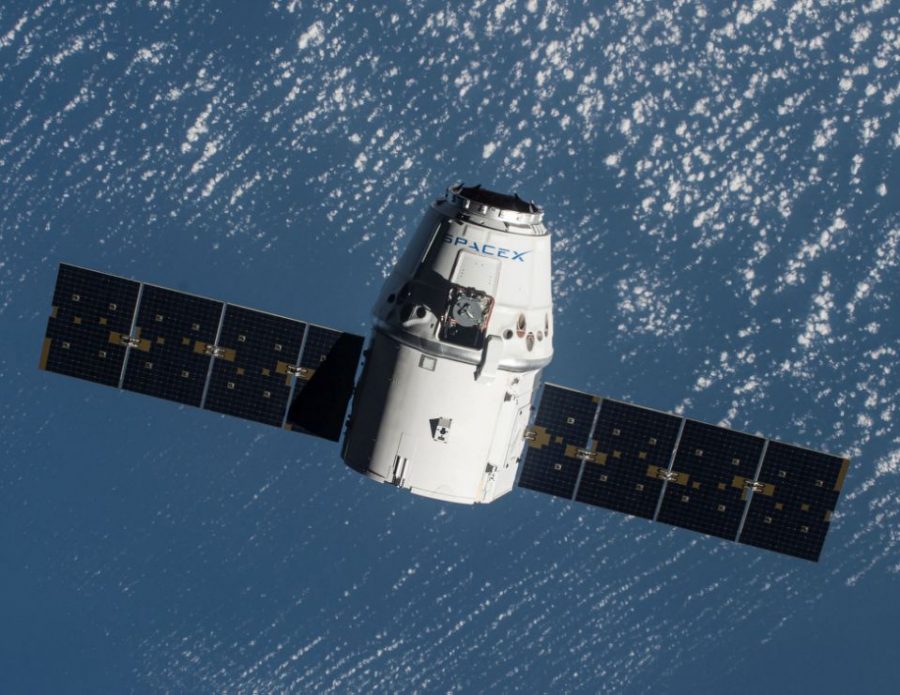SpaceX Launches New Dragon Cargo Ship
December 11, 2020
Elon Musk’s SpaceX company launched an upgraded version of the first Dragon spacecraft from Pad 39A at the National Aeronautics and Space Administration’s (NASA) Kennedy Space Center in Cape Canaveral, Florida. At 11:17 a.m. EDT on Dec. 6, the capsule headed toward the International Space Station (ISS). It arrived on Dec. 7, joining the Crew Dragon that brought four astronauts to the ISS in November, making it the first instance that SpaceX has had two capsules simultaneously in orbit.
The second Dragon ferried a 6,400-pound shipment including Christmas presents and a feast for the astronauts aboard the ISS, consisting of roasted turkey, cornbread dressing, cranberry sauce, and shortbread cookies with icing. There is also an abundance of spacewalk equipment, research gear, and material such as meteorite samples and 3D engineered heart tissue.
Forty mice were also sent in the spacecraft and are being observed for bone and eye studies with the purpose of further investigating the physical repercussions of prolonged time in space. The spaceship will reside at the station for a month before it returns to Earth and parachutes into the Atlantic Ocean.
The Dragon 2 was designed to transport supplies to and from space. In contrast to the Crew Dragon, it does not have seats, cockpit controls, or an emergency abort system, as it is not designed to transport people. However, it is equipped with a commercial airlock to allow on-board experiments.
The capsule’s unpressurized trunk contains a 2,400-pound airlock named the Bishop Airlock, which was made by Nanoracks, a company that processes flights to space through private industry, university, and government-sponsored projects. The Bishop Airlock is an improvement of the Japanese experiment airlock that already resides on the ISS and is about five times bigger.
“There are a lot of different environments that the scientists can use, a lot of different volumes, a lot of different payload power and data capabilities onboard the airlock that really will enhance their ability to do some really cool science,” said project manager Brock Howe.
The Dragon 2’s Falcon 9 rocket is an enhanced version of the Falcon 5 rocket and currently priced at $61.2 million per flight. Around nine minutes after the launch, the Falcon 9’s recyclable booster detached from the Dragon 2, fell into the Atlantic Ocean, and was caught by the “Of Course I Love You” SpaceX drone ship. The Dragon 2’s flight, called CRS-21, is the 24th Falcon 9 launch this year as well as SpaceX’s 21st ISS cargo launch.
“Falcon 9 is a reusable, two-stage rocket designed and manufactured by SpaceX for the reliable and safe transport of people and payloads into Earth orbit and beyond,” according to SpaceX’s website. “Falcon 9 is the world’s first orbital-class reusable rocket.”
CRS-21 is the first of a minimum of nine flights under a contract between SpaceX and NASA.
Photo courtesy of YAHOO.COM

